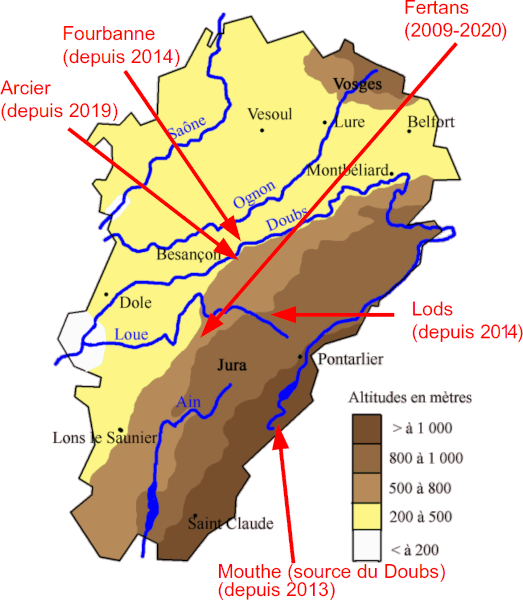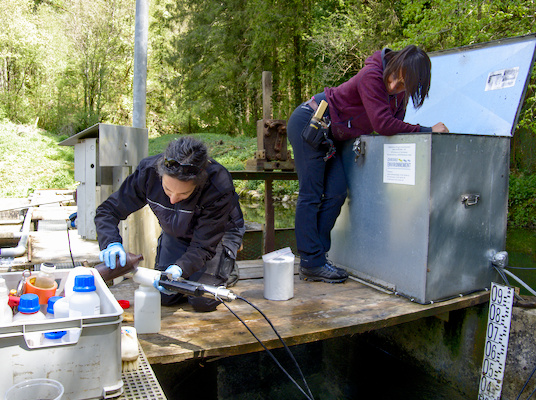The “Jurassic Karst” scheme in place since 2009 aims to characterise the long-term evolution of the karst aquifers of the Jura mountains.
contact us
Coordination : Hervé Jourde / Naomi Mazzilli
Data Base : Juliette Fabre
The “Jurassic Karst” scheme in place since 2009 aims to characterise the long-term evolution of the karst aquifers of the Jura mountains.
About 80% of the drinking water and almost all of the river water in the Jura Mountains comes from karst springs. The Jurassic Karst Observatory aims to study the links between the biogeochemical functioning of the infiltration zone and the hydrochemical response of karst systems, paying particular attention to the consequences of global warming and changes in land use.
The specific topographical context of the Jura Mountains means these processes can be studied at increasing altitudes along a climatic gradient. The plant cover and soil types vary along this gradient, thereby modulating the biogeochemical functioning of the infiltration zone of the karst hydrosystems.
The Jurassic Karst observatory integrates 4 monitoring sites along an altitude gradient in order to get a representative picture of the karst systems of the Jura mountains:


A number of physico-chemical parameters are monitored continuously on all sites using automatic probes. This continuous monitoring is supplemented by automatic water samples at the sites of Fourbanne, Arcier and Lods (2 samples/week).